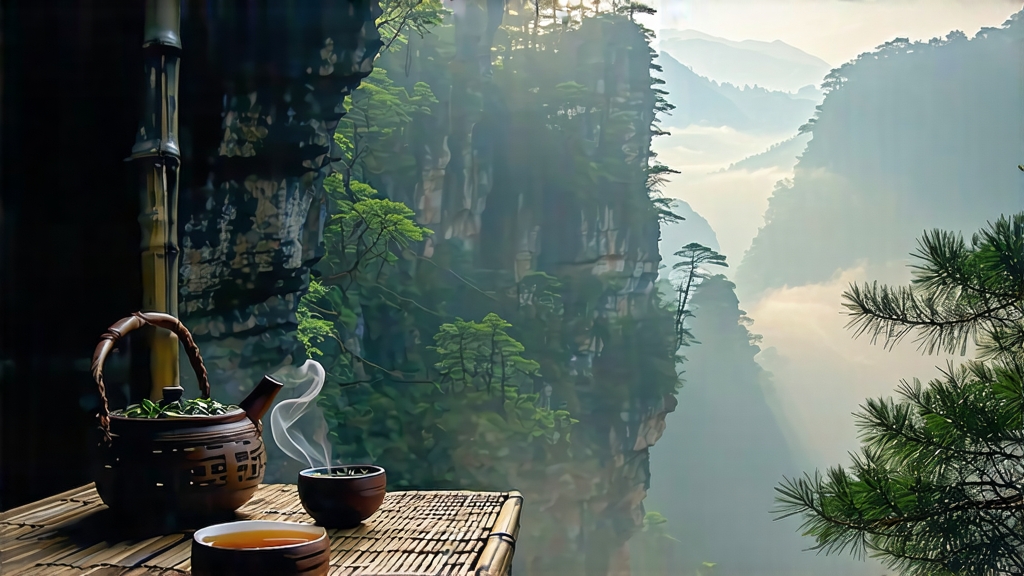
Long before English breakfast blends and afternoon tea services, there was Lapsang Souchong—the original black tea that startled 17th-century European palates and launched a global obsession. Born in the rugged Wuyi Mountains of northern Fujian, this pine-smoked masterpiece is not merely a beverage; it is a time capsule of Chinese craft, maritime trade, and cross-cultural curiosity. To understand Lapsang Souchong is to witness the moment when tea stepped out of green’s shadow and into the dark, aromatic world we now call “black.”
History: From Misty Cliffs to London Coffeehouses
Local legend places the birth of Lapsang Souchong during the late Ming dynasty, around 1646, when passing Qing soldiers commandeered a tea factory in Xingcun village. To dry the leaves quickly before the troops returned, workers rushed the withered tea over fresh pinewood fires. The accidental smoke infusion created a striking flavor that impressed the Dutch traders waiting at the port of Xiamen. By 1669 the East India Company listed “Bohea Souchong” among its most valuable cargoes, and the tea sailed past Cape Hope to London, where Samuel Pepys mentioned drinking “a cup of China tea smoked” in his diary. The name itself is a romanization of “Lapu Mountain small variety,” referring to the original gardens near Tongmu Pass, 1,200 m above sea level. For two centuries Wuyi keemuns and Yunnan goldens did not yet exist; Lapsang Souchong was black tea in European eyes, so much so that the English word “bohea” became generic for all dark leaf.
Terroir: Why Only Tongmu Can Birth Authentic Smoke
UNESCO lists the Wuyi range as a World Heritage biosphere for its vertical cliffs, mineral-rich laterite soil, and subtropical monsoon climate that traps fog until midday. Within this park lies a 60 km² core zone—Tongmu Guan—where only indigenous villagers may hold tea plots. Here the small-leaf tea bush (Camellia sinensis var. sinensis) grows slowly on rocky terraces, accumulating amino acids and volatile compounds that later marry with pine resin. The surrounding forest supplies Masson pine and Chinese red pine; their bark exudes terpenes that give the finished tea its signature resinous sweetness. Move the same bush 20 km downhill and the chemistry collapses; outsiders who attempt to mimic the process produce what Chinese traders dismiss as “weekend campfire tea.”
Two Families: Traditional Smoke vs. Contemporary Fruitiness
Purists recognize two stylistic branches. Traditional Lapsang Souchong (Zhengshan Xiaozhong) is withered over pine embers, rolled, oxidized 80–90 %, then pan-fired and finally smoked-dried in a three-tier bamboo structure called a qinglou. The entire cycle takes 28–30 hours and demands constant feeding of pinewood logs at 60–70 °C. The result is glossy, jet-black strips whose dry aroma recalls smoked plums and cured bacon. Since 2005 a new “unsmoked” or “original aroma” version has emerged, requested by Fujian exporters seeking to suit delicate modern palates. This tea skips the final smoking, yielding a coppery liquor that tastes of longan, honey, and malt—closer to a Keemun yet still anchored by Wuyi minerality. Both styles share the same cultivar and mountainside but diverge in the last six critical hours.
Craft: A 24-Hour Dance with Fire and Mist
Harvest begins at Qingming when the standard is “one bud with three leaves,” larger than the tender green-tea pick. The leaves are spread 3 cm deep on bamboo screens set over dying pine embers; the warm updraft dehydrates the surface while enzymatic activity continues inside, a simultaneous wither-smoke unique to this tea. After 8 hours the leaves lose 60 % moisture, become velvety, and are rolled under foot-powered machines that twist the cell walls without breaking them. Oxidation proceeds in wooden crates lined with wet cloth; the tea master sniffs every 20 minutes, waiting for a shift from grassy to apple-like aldehydes. Once the leaf edge turns chestnut, firing halts oxidation. The critical smoking follows: pinewood is split to finger-size sticks, lit, then smothered to produce a cool, fragrant smoke